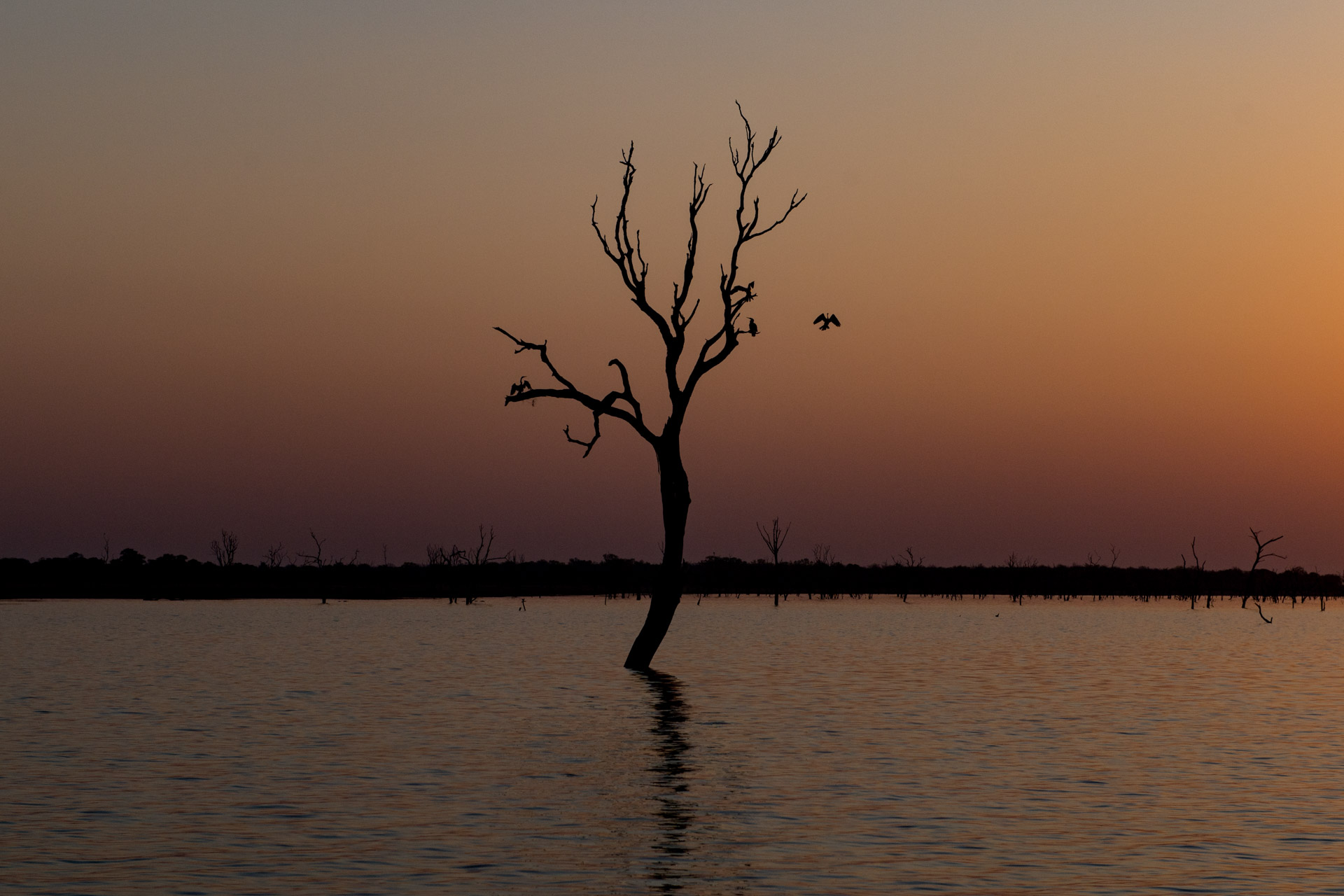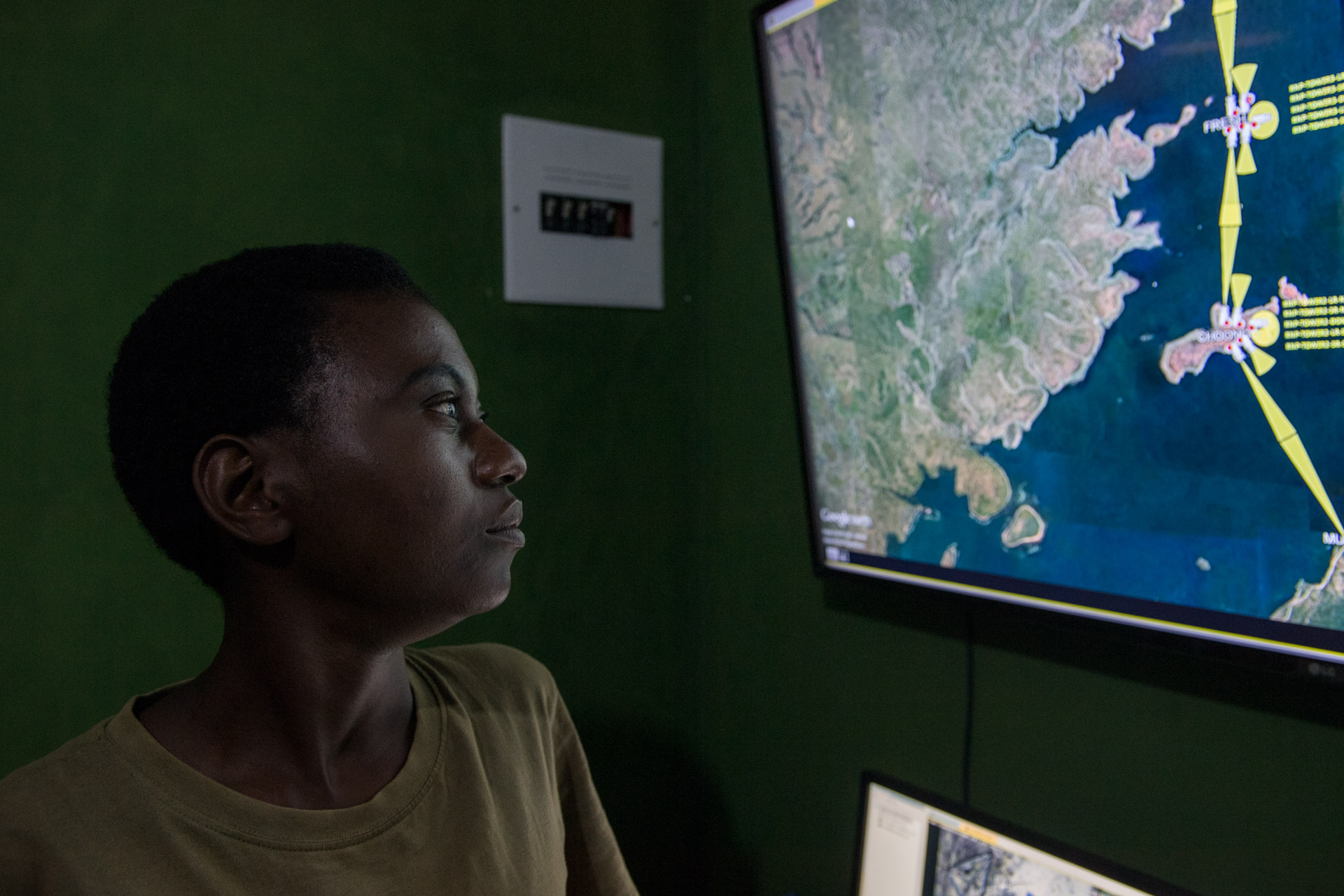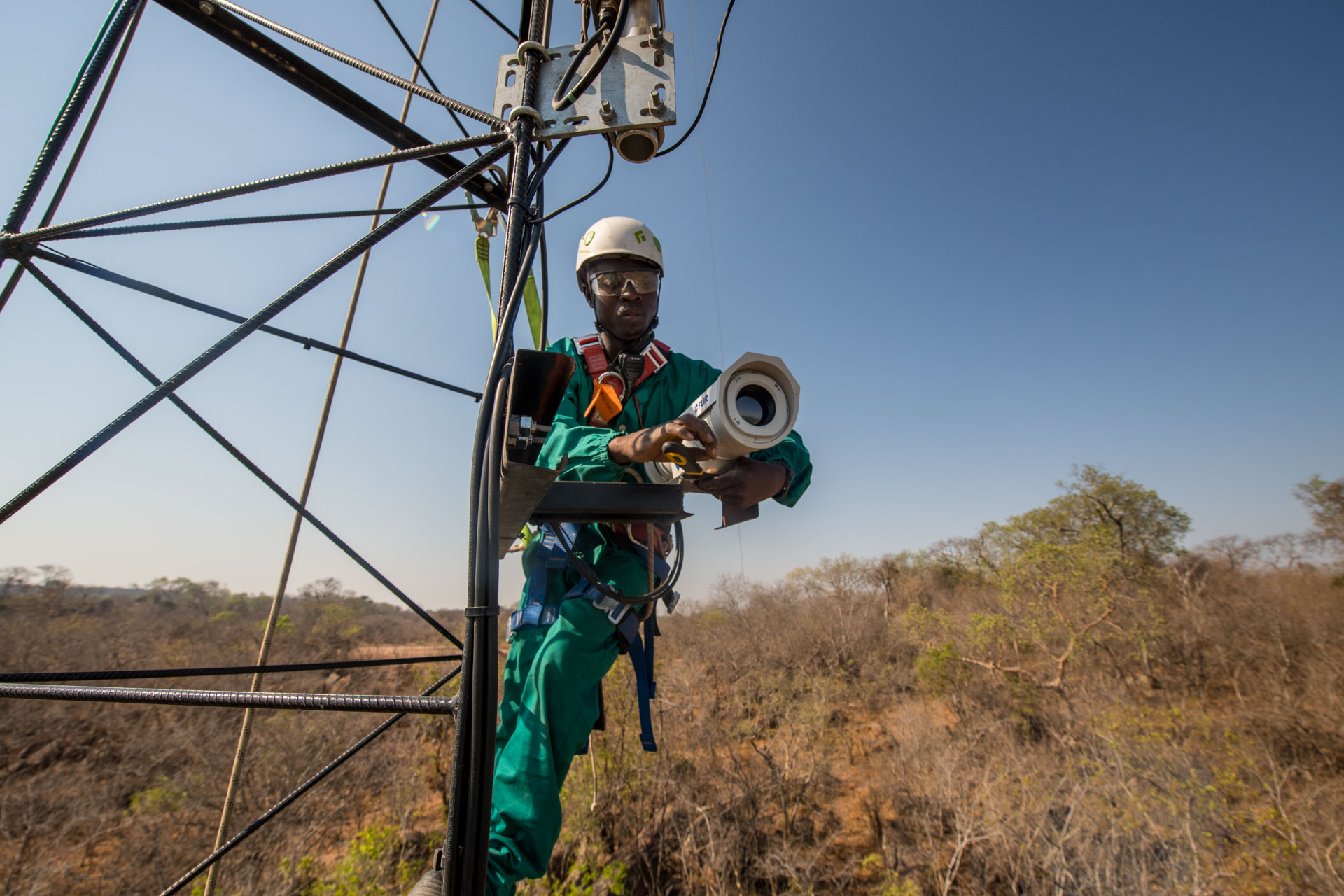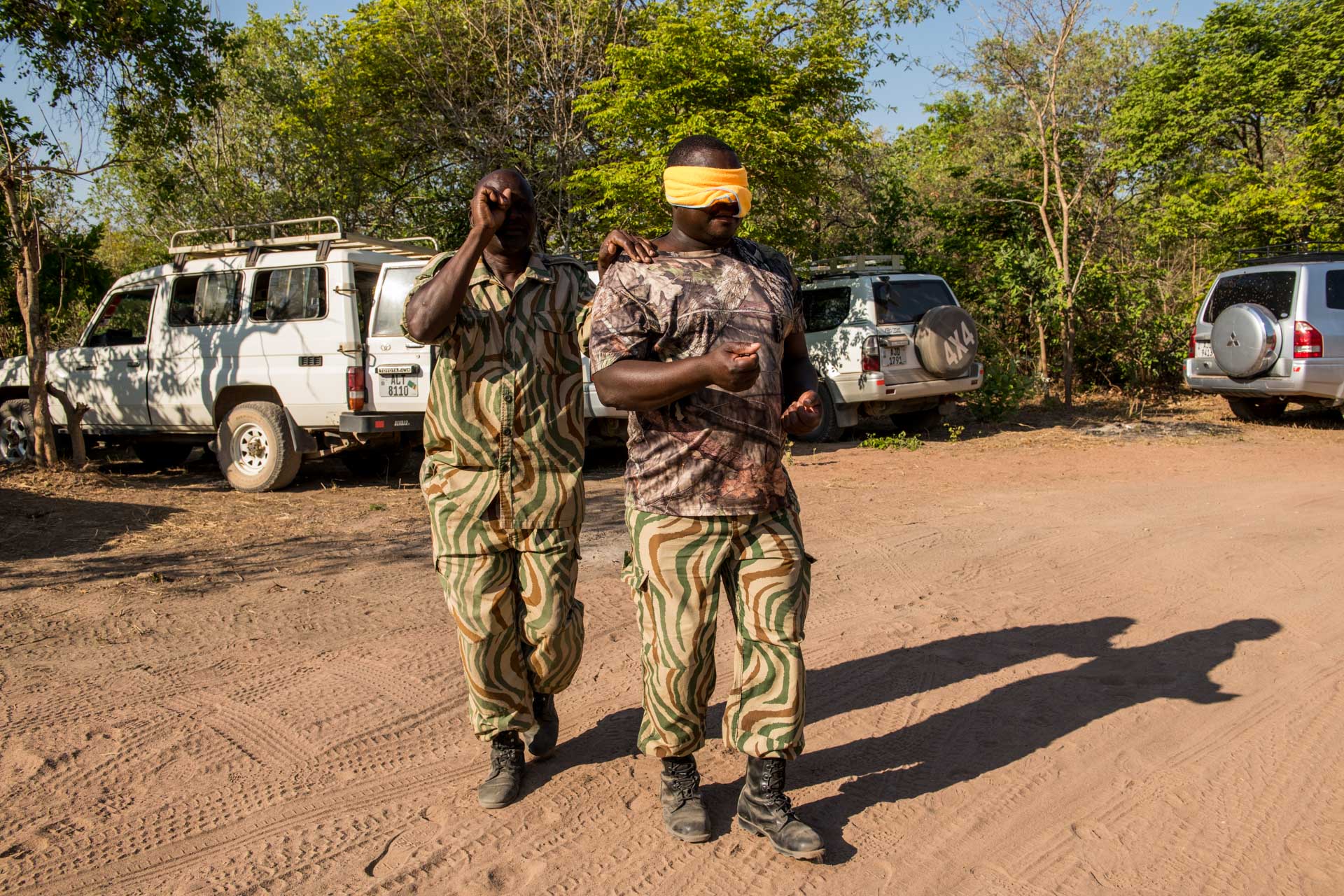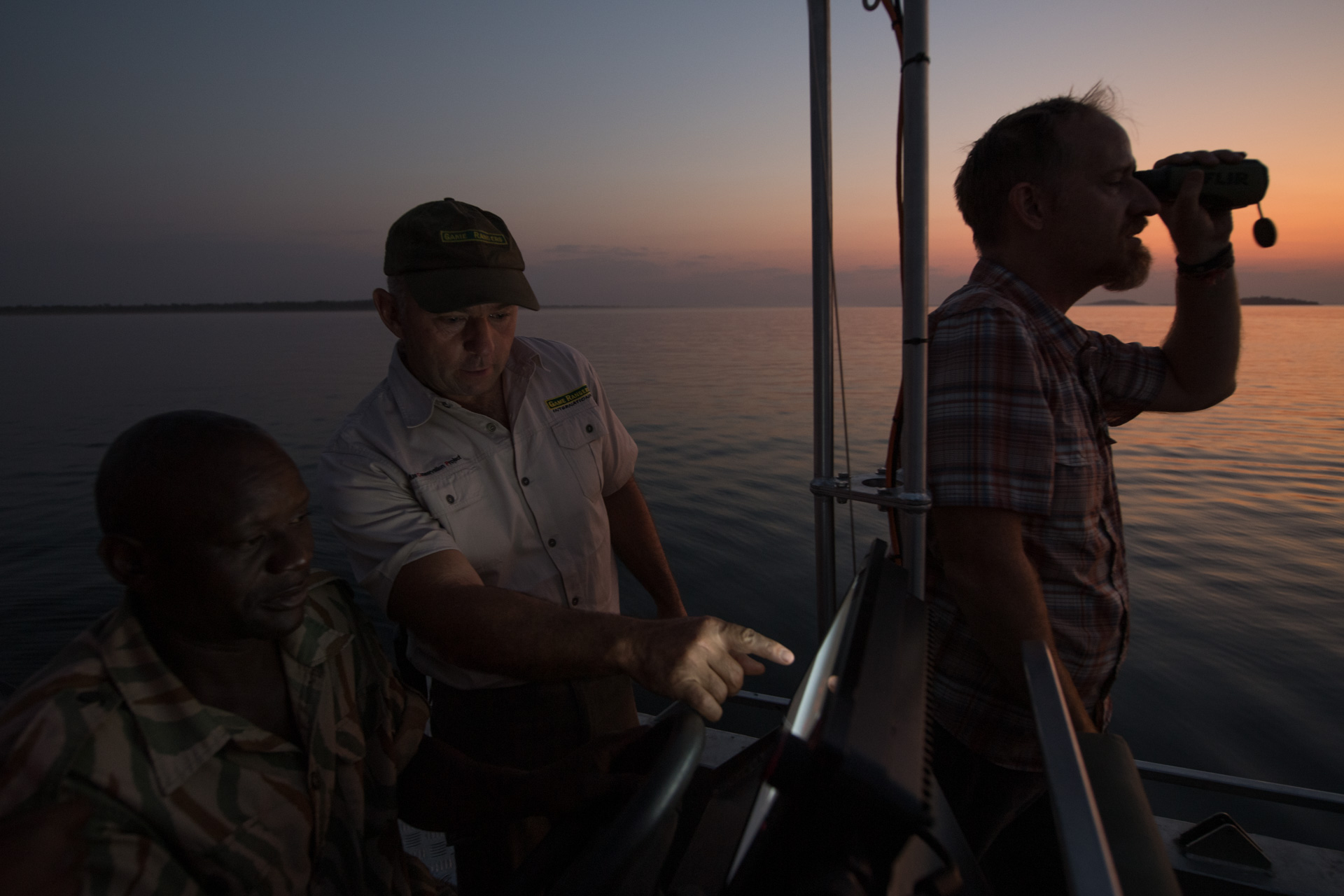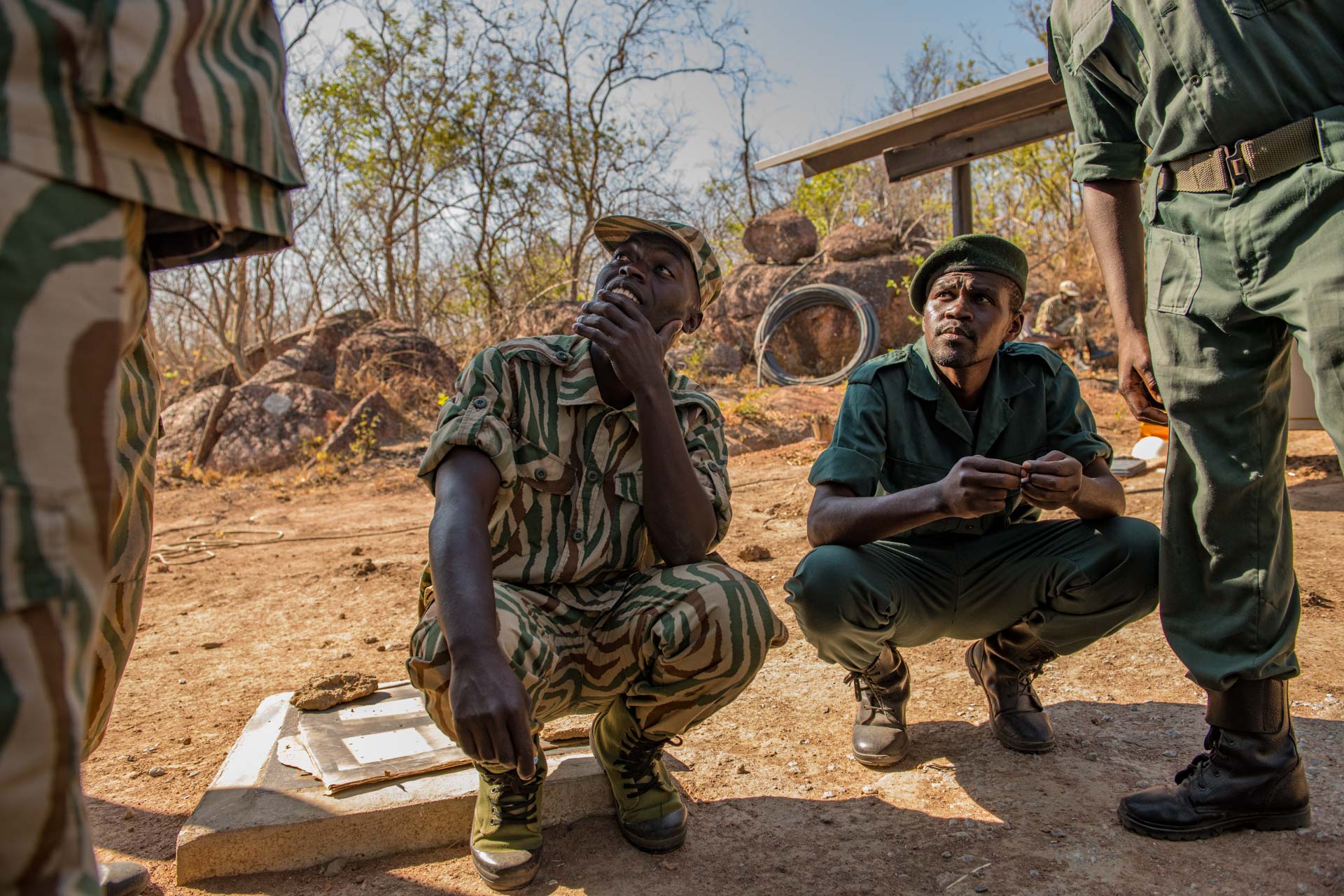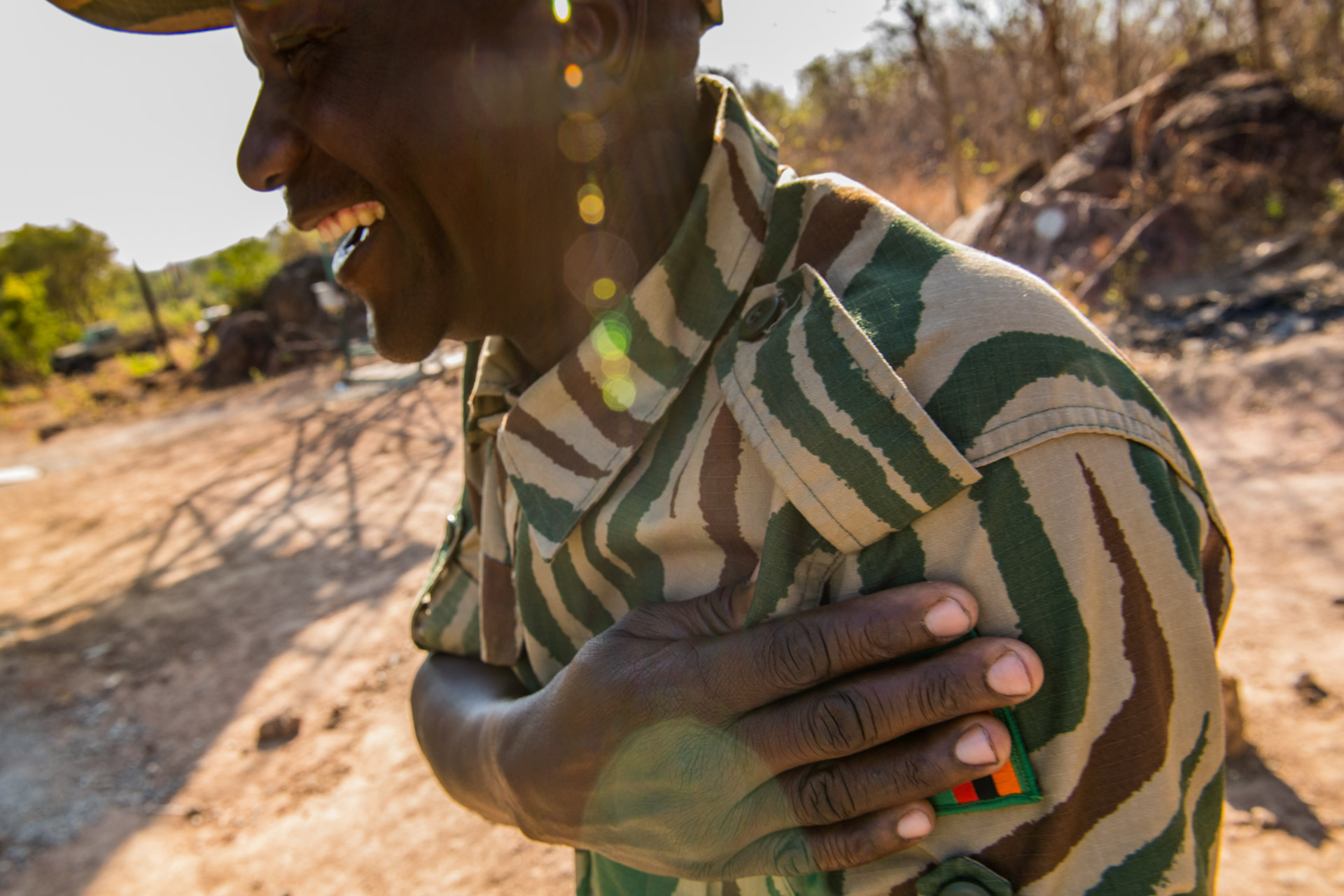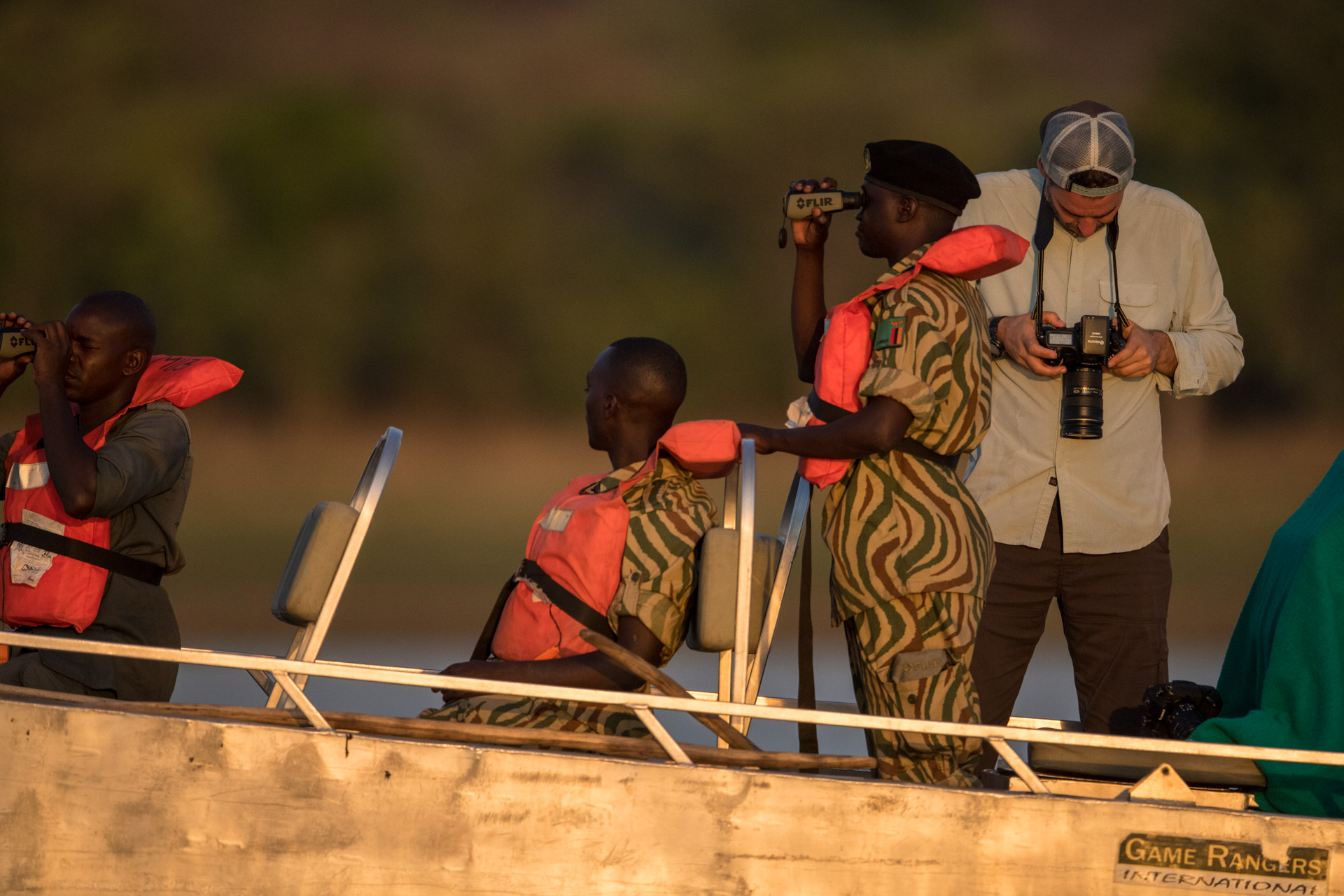01 | Context
RANGER SIGHTLINES
In Zambia’s Kafue National Park community rangers are using thermal imaging technology to expand protections for people and wildlife
At 3 am one October morning in 2018, a wooden canoe slid into the black waters of Lake Itezhi Tezhi, leaving the shore of Kafue National Park and heading toward the unprotected land on the lake’s eastern side. Darkness hid the two men in the hand-carved mokoro. Or so they thought.
“They were leaving the national park,” explains Patricia Mweetwa, a community ranger with Zambia’s Department of National Parks and Wildlife (DNPW). Her unit is tasked with keeping the waters and shores of the lake safe for wildlife and for local fishers: Digital evidence of the crossing is clearly rendered in black and white on a large flat-screen monitor behind her, in the new Marine Unit control room where she stands.
During the day, Mweetwa explains, legitimate fishers ply the lake, but no boats are allowed on the water between 6 pm and 6 am. Accordingly, anyone in a boat after dark is there illegally and potentially violating local fishing regulations—or poaching. Mweetwa flags the incident as suspicious, logging it in a hardcover notebook in neat cursive, a beret perched on her head.
Read the full story by Dianne Tipping-Woods here.
Keywords: Africa; elephants; Kafue National Park; poaching; rangers; wildlife; Zambia
02 | Photography
03 | Editorial Spreads
04 | On Assignment


